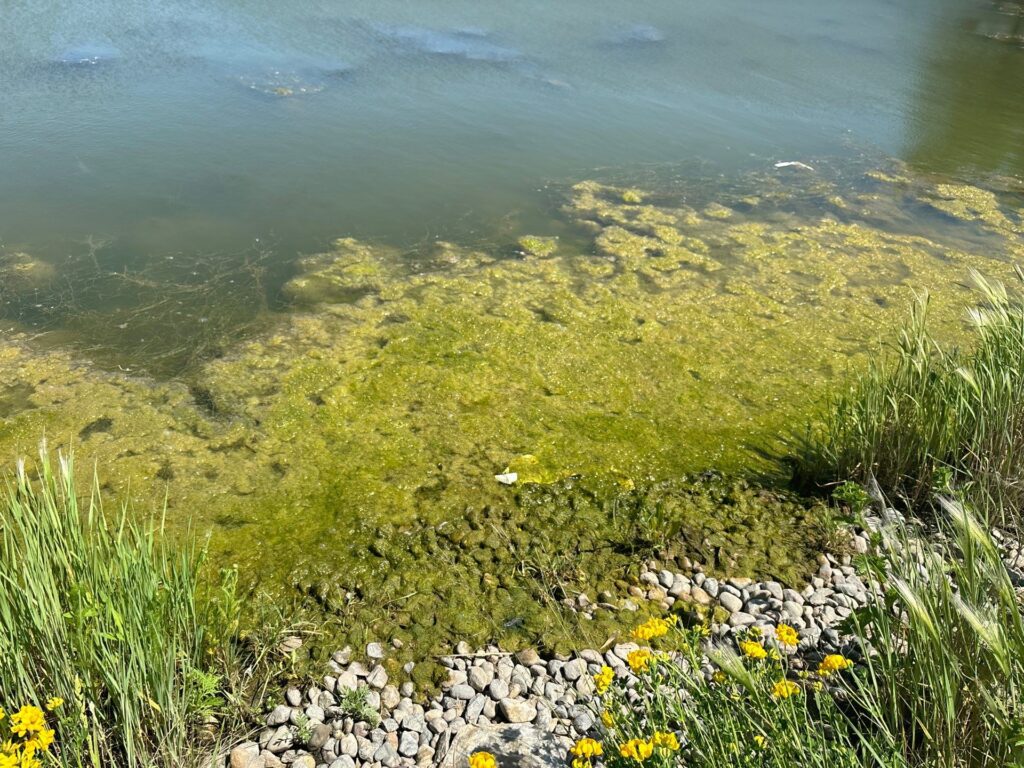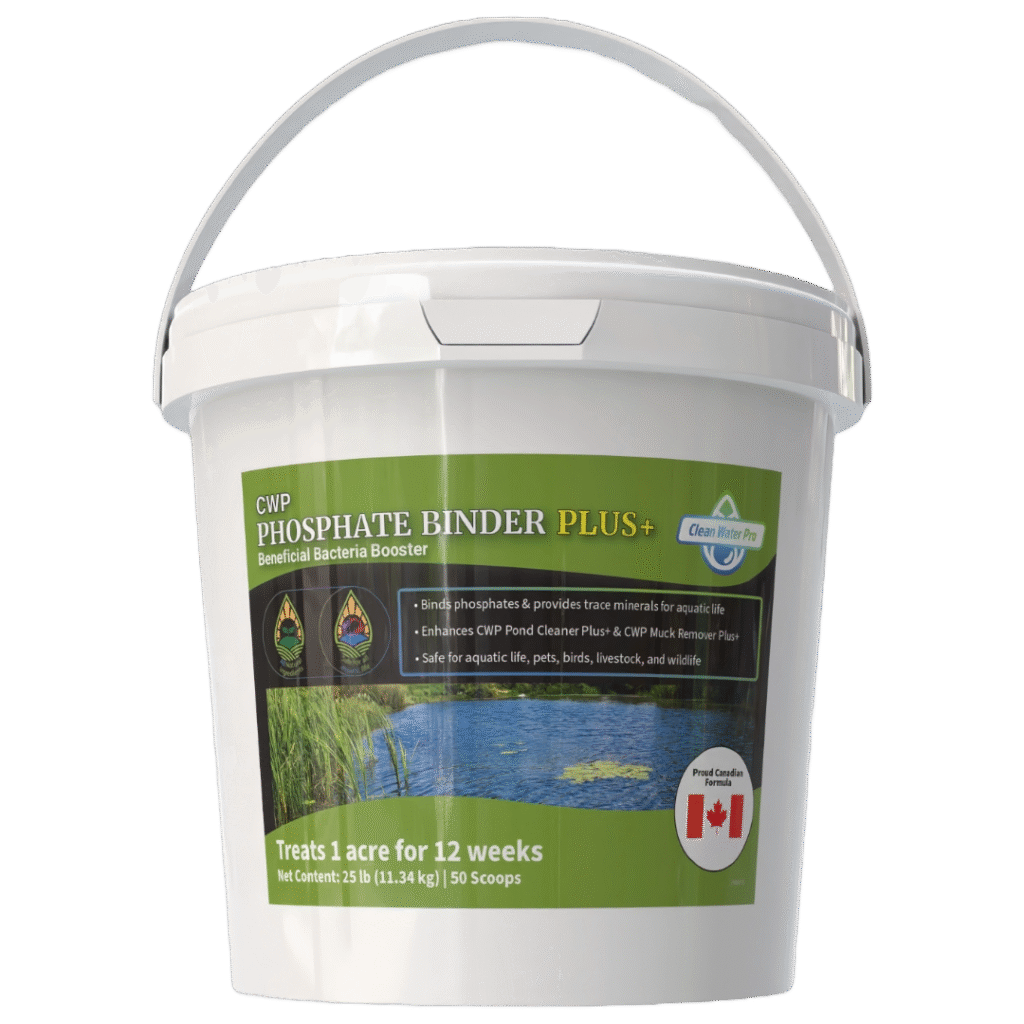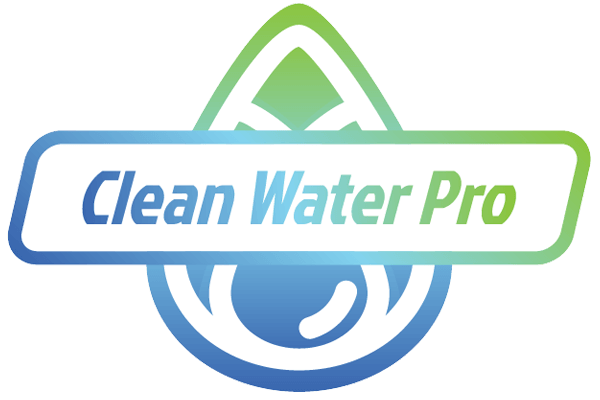Understanding and Managing Phosphates in Ponds
Maintaining a pond or a private closed lake’s ecological balance ensures its health and clarity. One key challenge in aquatic management is controlling phosphate levels, which can significantly impact water quality if left unchecked.
Our environmentally friendly solution is CWP Phosphate Binder Plus. This all-natural treatment is a robust solution designed to improve water conditions and support a healthy aquatic environment.

What Are Phosphates In Ponds?
Phosphate is a chemical form of phosphorus, one of the primary nutrients contributing to the growth and reproduction of plants and algae. In water bodies, phosphates can originate from various sources, including leaves, grass clippings, fish waste, and storm runoff. Runoff is particularly problematic as it often contains fertilizers and other contaminants from urban and agricultural sources. These phosphates become dissolved in the water and are readily available as a food source for algae and aquatic plants.
Let’s explore the science of phosphates in your pond or lake. Understanding how these nutrients impact water quality and aquatic life is essential for maintaining a healthy ecosystem.
The Impact of Phosphates on Water Bodies
- Algal Blooms: Phosphates are a significant food source for algae. Excessive levels can lead to rampant algae growth, known as algal blooms. These blooms decrease the water’s aesthetic value and can produce toxins harmful to aquatic life and humans.
- Eutrophication occurs when a water body becomes overly enriched with minerals and nutrients, causing excessive growth of plants and algae. This can deplete oxygen levels in the water at night due to respiration, and when algae decompose, it leads to dead zones where aquatic life cannot survive.
- Reduced Water Clarity and Quality: With increased algae and plant growth, water becomes cloudy or murky, reducing light penetration and affecting the health of the aquatic ecosystem.
How Does CWP Phosphate Binder Help?

This all-natural treatment tackles the core of these issues by binding free-floating phosphates in the water. Here’s how it works:
- Phosphate Binding: The binder uses naturally occurring minerals that chemically react with phosphates, transforming them into a form that algae and plants cannot utilize. This instantly reduces the available nutrients for algae, preventing excessive growth.
- Enhancement of Water Clarity: The phosphate binder helps restore clear water by reducing algal blooms and suspended organics, enhancing the aesthetic and health of the pond or lake.
- Supports Beneficial Bacteria: This product works synergistically with other treatments like Pond Cleaner and Muck Remover by enhancing the environment for beneficial bacteria, which further helps break down organic matter and reduce muck.
Benefits of Using CWP Phosphate Binder
- All-Natural and Safe: This solution is safe for fish, pets, birds, livestock, and wildlife, making it an ideal choice for environmentally conscious water management.
- Provides Trace Minerals: This treatment also adds essential trace minerals back into the water, benefiting the aquatic ecosystem’s overall health.
- Does Not Alter ph Levels: Unlike chemical treatments that can affect the water’s acidity or alkalinity, this Clean Water Pro treatment clarifies the water without impacting ph levels.
Implementing CWP Phosphate Binder in Pond Maintenance
Treatment should be used regularly for best results as part of your pond’s maintenance routine, especially during periods of high nutrient runoff or when you notice increased algae growth. Regular application helps maintain low phosphate levels, preventing algal blooms and supporting a balanced aquatic ecosystem.
